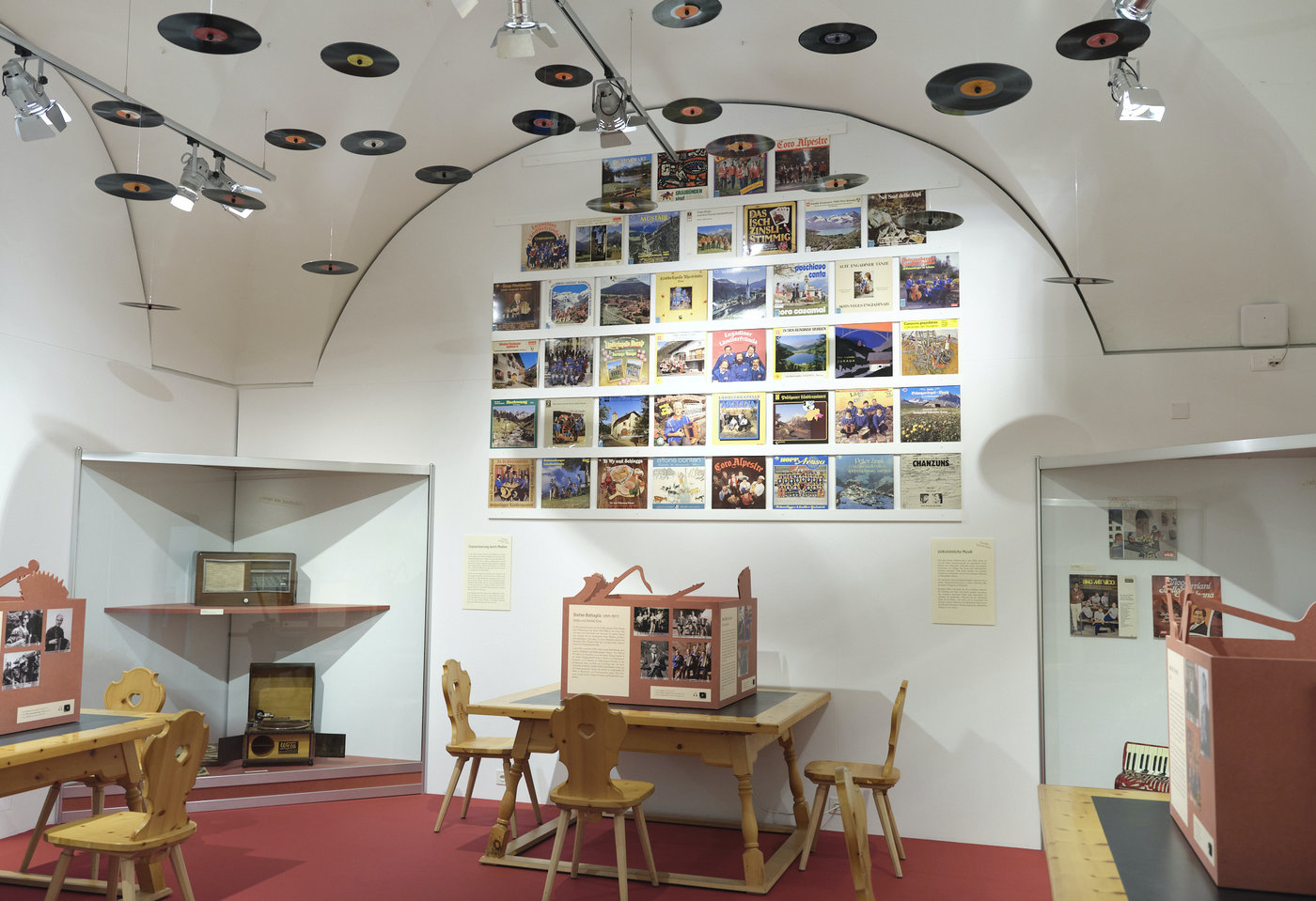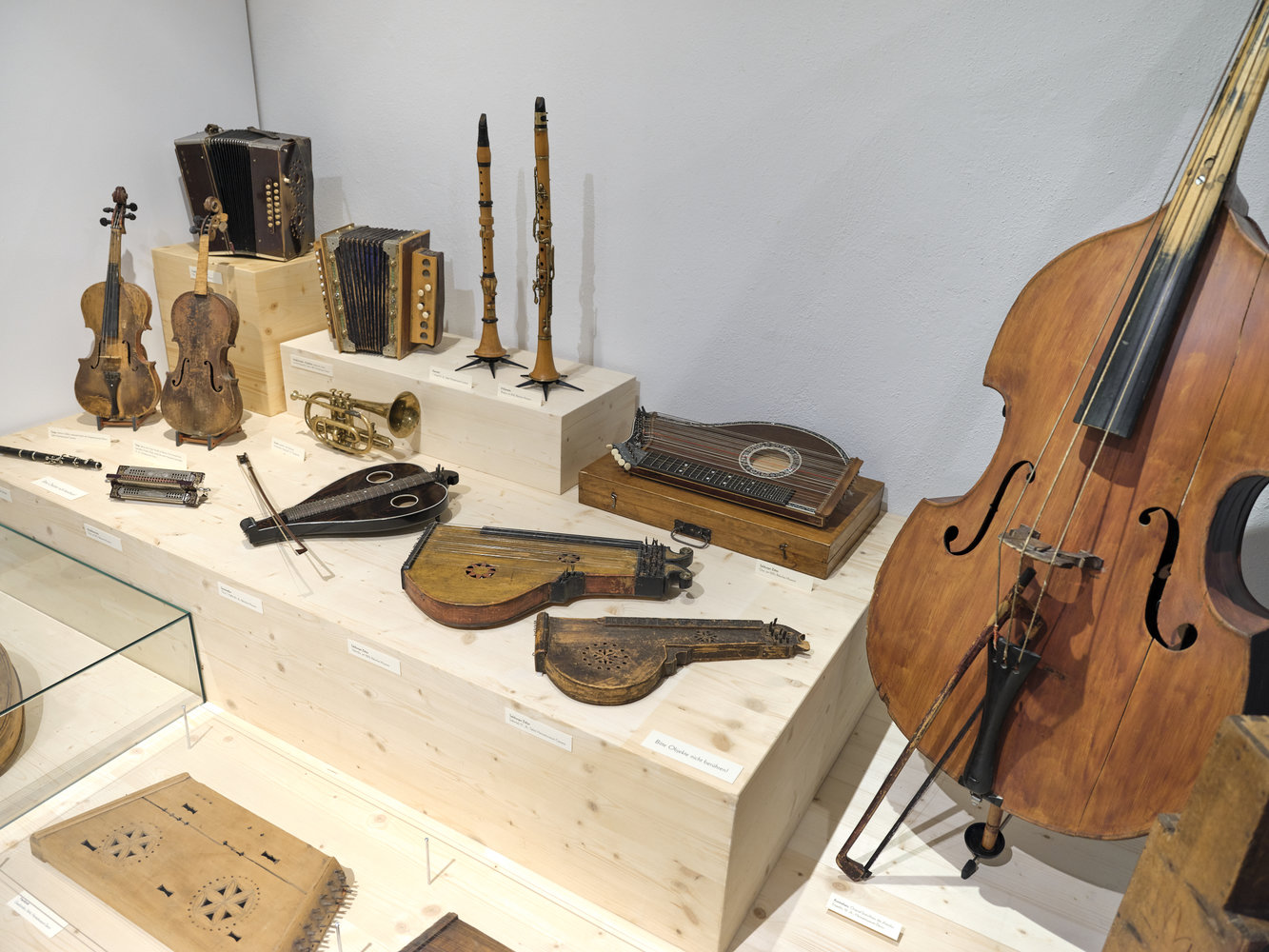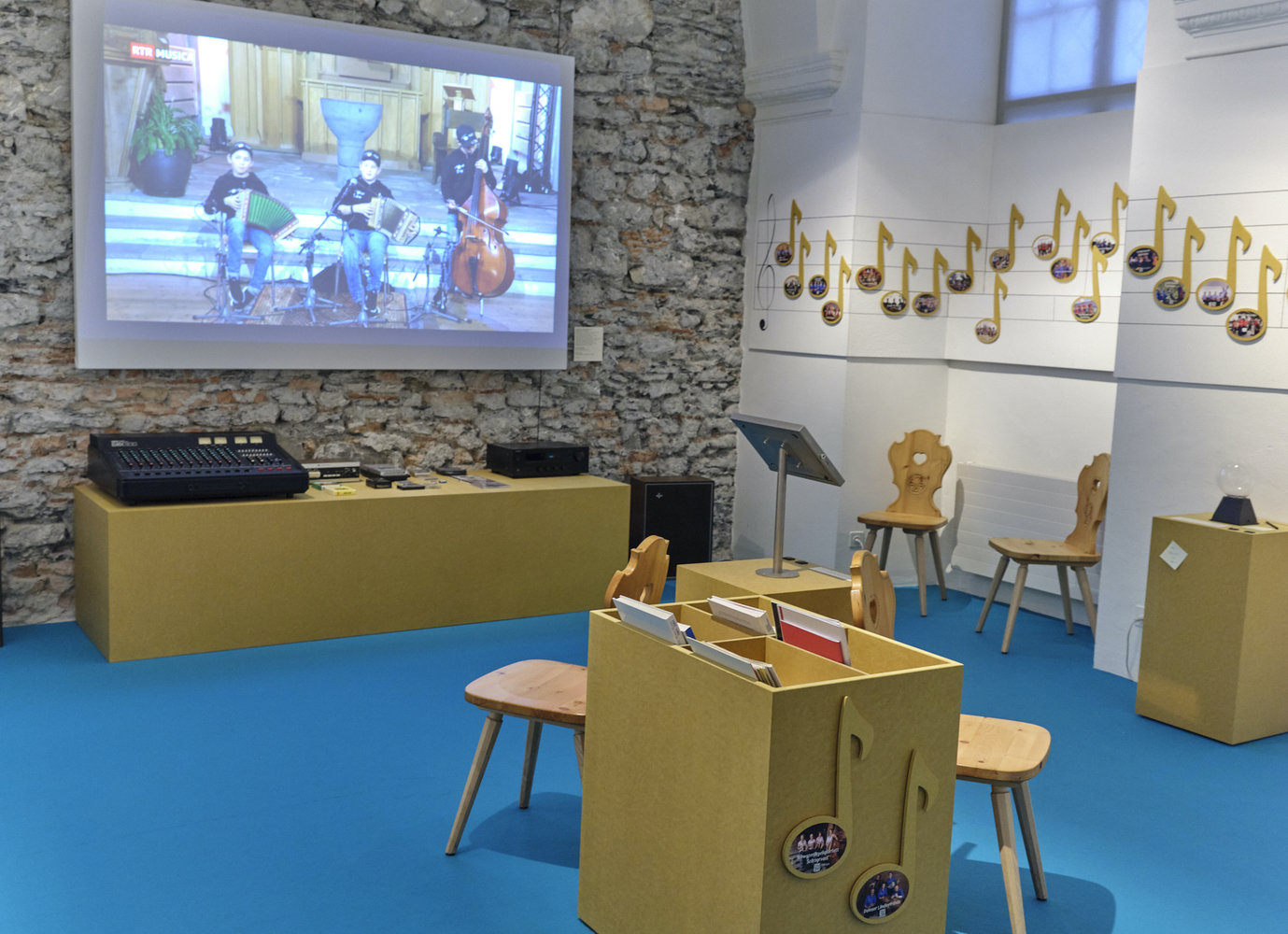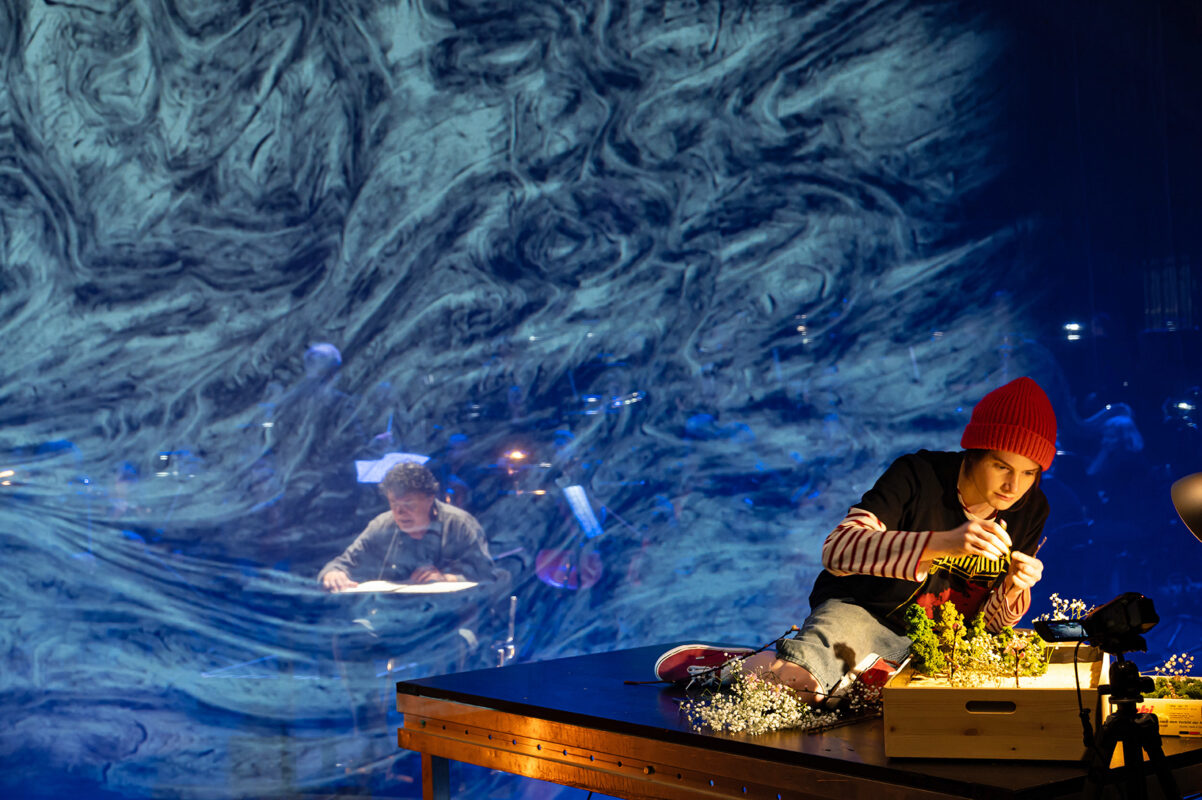Folk music in Graubünden
In the special exhibition "Grenzenlos lüpfig", the Rhaetian Museum in Chur reveals the diversity of traditional music in this canton and shows how it absorbed influences from other regions and in turn influenced music from abroad.

Silvia Conzett and her team have brought together around forty musical instruments from the museum's own collection, several local museums in Graubünden and the recently opened Haus für Instrumente in Kriens and supplemented them with numerous photos and sound samples. For in-depth study, small reference libraries with songbooks, playbooks and secondary literature are also available in each exhibition room.
The important vocal tradition in Graubünden - it is sung in five Romansh idioms, German, Italian and Rumantsch grischun - is presented in pictures, sheet music, audio stations and publications, including editions of the important folk song collection by Alfons Maissen. The life-size silhouettes of a group of seven singers invite visitors to sing along to one of the seven melodies. Instead of a catalog, the exhibition texts are freely available as handouts.
From the Tiba to the Schüblöt da marmel
Just like the traditional music of the whole of Switzerland, the folk music of Graubünden corresponds to a locally shaped alpine folk music, which however reflects the influences of the neighboring countries. The southern valleys have the bandella, a small wind band, with Ticino, Lombardy and Piedmont. In the Lower Engadine, the Tyrolean raffele, a Salzburger-shaped scraper zither, was still being plucked in the early 20th century.

The exhibition at the Rhaetian Museum also highlights sounding specialties from Graubünden. While the tiba, a conical natural tone instrument made of wood or tinplate, was almost forgotten fifty years ago, this alphorn is making a comeback in the Surselva. It is being built, played as an amateur instrument and has led to a new use, the tibadas. The players line up in the landscape and respond in turn to a central tibada player.
In addition to cattle bells and goat horns, shepherd's music in the Münstertal included a signaling instrument that is unique in Switzerland, the Schüblöt da marmel. It is cut from gypsum stones that fall into the Rambach in Santa Maria Müstair. The little vessel flute, which lies completely on the tongue for playing, would have died out if a bright vacation boy from Alsace had not copied the way it was made and played from an old shepherd.
The Graubünden style reaches the whole of Switzerland
The violin schools in the Safiental can be counted among the special features of Graubünden's musical tradition. As early as the 19th century, several teachers taught schoolchildren how to make and play string instruments and brought together young people living far apart in scattered settlements to form music-making groups. Recently, the dance manuscripts from the Safiental have been edited and published.
Before the standardization of the Ländler band, dance ensembles made up of local string and wind players were formed in the villages of German-speaking Switzerland and named after the first name of the respective band leader. The Fränzlimusik, named after the legendary blind violinist Franz Waser, gave rise to the typical Engadin line-up of the Fränzlis da Tschlin (Red. see SMZ 11/2022, p. 19 f.).

It was not until the 1930s that the instrumentation of the Ländlerkapelle was consolidated, in the so-called Bernese style (several Schwyzerörgeli and bass), the Central Swiss style (clarinet, Schwyzerörgeli, double bass and piano) and the Grisons style, depending on the major folk music regions, with two clarinets, two Schwyzerörgeli or accordion and bass. This "Ländler" style, first played by musicians from the Grisons in guest performances at Grisons clubs in the cities, later as members of Swiss-German bands, but above all through Radio Beromünster and records, became Swiss national music during the National Exhibition in 1939 and thus a spiritual national defense. This explains why the Bündner style is known and loved throughout Switzerland.
Boundlessly lüpfig. On the folk music of Graubünden. Special exhibition at the Rhaetian Museum (near St. Martin's Church) Chur, until March 3, 2024, Tue-Sun 10 a.m.-5 p.m.







